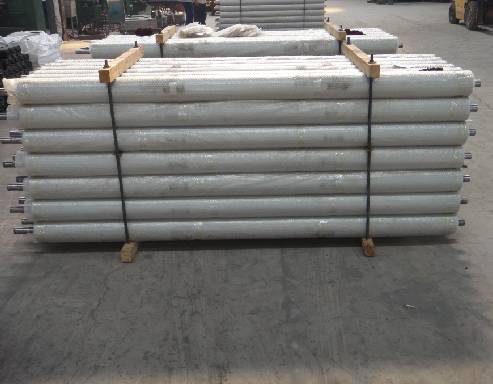 Afrikaans
Afrikaans  Albanian
Albanian  Amharic
Amharic  Arabic
Arabic  Armenian
Armenian  Azerbaijani
Azerbaijani  Basque
Basque  Belarusian
Belarusian  Bengali
Bengali  Bosnian
Bosnian  Bulgarian
Bulgarian  Catalan
Catalan  Cebuano
Cebuano  Corsican
Corsican  Croatian
Croatian  Czech
Czech  Danish
Danish  Dutch
Dutch  English
English  Esperanto
Esperanto  Estonian
Estonian  Finnish
Finnish  French
French  Frisian
Frisian  Galician
Galician  Georgian
Georgian  German
German  Greek
Greek  Gujarati
Gujarati  Haitian Creole
Haitian Creole  hausa
hausa  hawaiian
hawaiian  Hebrew
Hebrew  Hindi
Hindi  Miao
Miao  Hungarian
Hungarian  Icelandic
Icelandic  igbo
igbo  Indonesian
Indonesian  irish
irish  Italian
Italian  Japanese
Japanese  Javanese
Javanese  Kannada
Kannada  kazakh
kazakh  Khmer
Khmer  Rwandese
Rwandese  Korean
Korean  Kurdish
Kurdish  Kyrgyz
Kyrgyz  Lao
Lao  Latin
Latin  Latvian
Latvian  Lithuanian
Lithuanian  Luxembourgish
Luxembourgish  Macedonian
Macedonian  Malgashi
Malgashi  Malay
Malay  Malayalam
Malayalam  Maltese
Maltese  Maori
Maori  Marathi
Marathi  Mongolian
Mongolian  Myanmar
Myanmar  Nepali
Nepali  Norwegian
Norwegian  Norwegian
Norwegian  Occitan
Occitan  Pashto
Pashto  Persian
Persian  Polish
Polish  Portuguese
Portuguese  Punjabi
Punjabi  Romanian
Romanian  Russian
Russian  Samoan
Samoan  Scottish Gaelic
Scottish Gaelic  Serbian
Serbian  Sesotho
Sesotho  Shona
Shona  Sindhi
Sindhi  Sinhala
Sinhala  Slovak
Slovak  Slovenian
Slovenian  Somali
Somali  Spanish
Spanish  Sundanese
Sundanese  Swahili
Swahili  Swedish
Swedish  Tagalog
Tagalog  Tajik
Tajik  Tamil
Tamil  Tatar
Tatar  Telugu
Telugu  Thai
Thai  Turkish
Turkish  Turkmen
Turkmen  Ukrainian
Ukrainian  Urdu
Urdu  Uighur
Uighur  Uzbek
Uzbek  Vietnamese
Vietnamese  Welsh
Welsh  Bantu
Bantu  Yiddish
Yiddish  Yoruba
Yoruba  Zulu
Zulu take-up pulley
Understanding Take-Up Pulleys Essential Components in Mechanical Systems
In the realm of mechanical engineering, take-up pulleys play an indispensable role in various applications, particularly in conveyor systems and material handling. These specialized pulleys are designed to manage the slack in belts or cables, ensuring smooth operation and optimal performance of the overall system. This article delves into the function, importance, and diverse applications of take-up pulleys.
What is a Take-Up Pulley?
A take-up pulley is a device used to maintain tension in a belt or cable system. It is typically mounted on a frame that can slide or pivot, allowing it to adjust the tension as necessary. As the belt wears out or stretches over time, the take-up pulley compensates for this elongation by moving in a manner that keeps the belt taut. This functionality is crucial, as insufficient tension can lead to slippage, excessive wear, and even system failure.
Functionality and Design
The design of take-up pulleys can vary widely depending on their application. They may feature adjustable brackets, spring-loaded mechanisms, or weight-based systems to apply the correct amount of tension. The pulley itself is often made from durable materials like steel or high-grade plastics to withstand the rigors of industrial environments. Selecting the right design and construction material is vital to ensure that the pulley can handle the specified load and maintain longevity.
Importance of Take-Up Pulleys
The importance of take-up pulleys can be underscored through a variety of aspects
take-up pulley

1. Tension Maintenance A critical function of take-up pulleys is to ensure that there is consistent tension in the system. This is essential for preventing slippage and ensuring that the belts or cables operate effectively.
2. Extended Equipment Life By providing the necessary tension, take-up pulleys help prevent wear and tear on the belt, reducing the frequency of replacements and maintenance. This longevity contributes to cost savings in industrial operations.
3. Operational Efficiency A properly tensioned system operates more efficiently, resulting in improved productivity. Using take-up pulleys allows machines to run smoothly, enhancing overall operational capability.
4. Safety Mechanism In many industrial applications, an unexpected belt slack can lead to dangerous conditions. Take-up pulleys help mitigate this risk by automatically adjusting belt tension and maintaining stability within the system.
Applications in Various Industries
Take-up pulleys are utilized across a wide range of industries, including mining, manufacturing, agriculture, and logistics. In mining operations, for instance, they are critical for maintaining conveyor systems that transport minerals from one point to another. In manufacturing, they help ensure that assembly lines operate without interruption. The agricultural sector also employs take-up pulleys in systems for grain handling and processing, ensuring materials move efficiently from storage to production areas.
Conclusion
In summary, take-up pulleys are vital components within many mechanical systems, serving the critical function of tension maintenance in belt and cable applications. Their ability to enhance operational efficiency, prolong equipment life, and improve safety makes them essential across various industries. As technology continues to evolve, the design and materials used in take-up pulleys are likely to advance as well, further improving their effectiveness and functionality in modern mechanical systems. Understanding and implementing take-up pulleys correctly can be the key to achieving optimal performance in any industrial operation.
-
Revolutionizing Conveyor Reliability with Advanced Rubber Lagging PulleysNewsJul.22,2025
-
Powering Precision and Durability with Expert Manufacturers of Conveyor ComponentsNewsJul.22,2025
-
Optimizing Conveyor Systems with Advanced Conveyor AccessoriesNewsJul.22,2025
-
Maximize Conveyor Efficiency with Quality Conveyor Idler PulleysNewsJul.22,2025
-
Future-Proof Your Conveyor System with High-Performance Polyurethane RollerNewsJul.22,2025
-
Driving Efficiency Forward with Quality Idlers and RollersNewsJul.22,2025





























